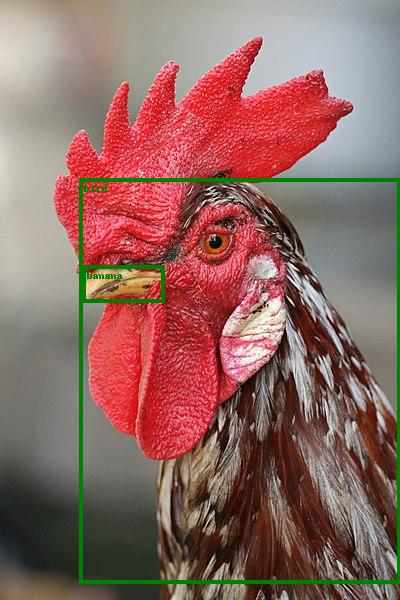How to implement Nested set model in SQL:
- stackoverflow.com/questions/192220/what-is-the-most-efficient-elegant-way-to-parse-a-flat-table-into-a-tree/42781302#42781302 contains the correct left/size representation and update queries, which makes it much easier to maintain the tree without having to worry about the sizes of siblings which are constant
- stackoverflow.com/questions/192220/what-is-the-most-efficient-elegant-way-to-parse-a-flat-table-into-a-tree/194031#194031 amazing ASCII art representations of the structure. Unfortunately uses a wonky left/right representation, rather than the much more natural left/size representation from the other post
Example: sqlite/ip.c, adapted from www.sqlite.org/loadext.html, also mentioned explained at: stackoverflow.com/questions/7638238/sqlite-ip-address-storage/76520885#76520885.
Sample usage in the test program: sqlite/test.sh.
pytorch.org/vision/0.13/models.html has a minimal runnable example adapted to python/pytorch/resnet_demo.py.
That example uses a ResNet pre-trained on the COCO dataset to do some inference, tested on Ubuntu 22.10:This first downloads the model, which is currently 167 MB.
cd python/pytorch
wget -O resnet_demo_in.jpg https://upload.wikimedia.org/wikipedia/commons/thumb/6/60/Rooster_portrait2.jpg/400px-Rooster_portrait2.jpg
./resnet_demo.py resnet_demo_in.jpg resnet_demo_out.jpgWe know it is COCO because of the docs: pytorch.org/vision/0.13/models/generated/torchvision.models.detection.fasterrcnn_resnet50_fpn_v2.html which explains that is an alias for:
FasterRCNN_ResNet50_FPN_V2_Weights.DEFAULTFasterRCNN_ResNet50_FPN_V2_Weights.COCO_V1After it finishes, the program prints the recognized classes:so we get the expected
['bird', 'banana']bird, but also the more intriguing banana. couldn't save system state: Minimum free space to take a snapshot and preserve ZFS performance is by  Ciro Santilli 37 Updated 2025-07-16
Ciro Santilli 37 Updated 2025-07-16
This BS started after the move to ZFS. The temporary solution appears to be: askubuntu.com/questions/1293685/out-of-space-on-boot-zpool-and-cant-run-updates-anymore/1374204#1374204
And then this to disable automatic snapshots in the future: askubuntu.com/questions/1233049/disable-automatic-zsys-snapshots-zfs-on-root/1279593#1279593
sudo mv /etc/apt/apt.conf.d/90_zsys_system_autosnapshot /etc/apt/apt.conf.d/90_zsys_system_autosnapshot.disabledOr likely more generally, on GNOME desktop, which is the default desktop environment as of Ubuntu 22.10.
Update multiple rows with different values in a single SQL query by  Ciro Santilli 37 Updated 2025-07-16
Ciro Santilli 37 Updated 2025-07-16
Vertebrates minus tetrapods.
sqlite3 ':memory:' 'WITH t (i) AS (VALUES (-1), (-1), (-2)) SELECT *, row_number() over () FROM t'-1|1
-1|2
-2|3With a possible output:
partition by:sqlite3 ':memory:' 'WITH t (i) AS (VALUES (-1), (-1), (-2)) SELECT *, row_number() over ( partition by i ) FROM t'-2|1
-1|1
-1|2rm -f tmp.sqlite
sqlite3 tmp.sqlite "create table t (id integer, val integer)"
sqlite3 tmp.sqlite <<EOF
insert into t values
(0, 0),
(1, 5),
(2, 10),
(3, 14),
(4, 15),
(5, 16),
(6, 20),
(7, 25),
(8, 29),
(9, 30),
(10, 30),
(11, 31),
(12, 35),
(13, 40)
EOFShow how many neighbours each column has with Output:
val between val - 2 and val + 2 inclusive:sqlite3 tmp.sqlite <<EOF
SELECT id, val, COUNT(*) OVER (
ORDER BY val RANGE BETWEEN 2 PRECEDING AND 2 FOLLOWING
) FROM t;
EOF0|0|1
1|5|1
2|10|1
3|14|3
4|15|3
5|16|3
6|20|1
7|25|1
8|29|4
9|30|4
10|30|4
11|31|4
12|35|1
13|40|1val - 1 and val + 1 inclusive instead:sqlite3 tmp.sqlite <<EOF
SELECT id, val, COUNT(*) OVER (
ORDER BY val RANGE BETWEEN 1 PRECEDING AND 1 FOLLOWING
) FROM t;
EOF0|0|1
1|5|1
2|10|1
3|14|2
4|15|3
5|16|2
6|20|1
7|25|1
8|29|3
9|30|4
10|30|4
11|31|3
12|35|1
13|40|1There seems to be no analogue to HAVING for window functions, so we can just settle for a subquery for once, e.g.:which outputs:
sqlite3 tmp.sqlite <<EOF
SELECT * FROM (
SELECT id, val, COUNT(*) OVER (
ORDER BY val RANGE BETWEEN 1 PRECEDING AND 1 FOLLOWING
) as c FROM t
) WHERE c > 2
EOF4|15|3
8|29|3
9|30|4
10|30|4
11|31|3stackoverflow.com/questions/17046204/how-to-find-the-boundaries-of-groups-of-contiguous-sequential-numbers/17046749#17046749 just works, even in SQLite which supports all quoting types known to man including
[] for compatibility with insane RDBMSs!Here's a slightly saner version:
rm -f tmp.sqlite
sqlite3 tmp.sqlite "create table mytable (id integer primary key autoincrement, number integer, status integer)"
sqlite3 tmp.sqlite <<EOF
insert into mytable(number, status) values
(100,0),
(101,0),
(102,0),
(103,0),
(104,1),
(105,1),
(106,0),
(107,0),
(1014,0),
(1015,0),
(1016,1),
(1017,0)
EOF
sqlite3 tmp.sqlite <<EOF
SELECT
MIN(id) AS "id",
MIN(number) AS "from",
MAX(number) AS "to"
FROM (
SELECT ROW_NUMBER() OVER (ORDER BY number) - number AS grp, id, number
FROM mytable
WHERE status = 0
)
GROUP BY grp
ORDER BY MIN(number)
EOFoutput:
1|100|103
7|106|107
9|1014|1015
12|1017|1017To get only groups of length greater than 1:
sqlite3 tmp.sqlite <<EOF
SELECT "id", "from", "to", "to" - "from" + 1 as "len" FROM (
SELECT
MIN("id") AS "id",
MIN(number) AS "from",
MAX(number) AS "to"
FROM (
SELECT ROW_NUMBER() OVER (ORDER BY "number") - "number" AS "grp", "id", "number"
FROM "mytable"
WHERE "status" = 0
)
GROUP BY "grp"
ORDER BY MIN("number")
) WHERE "len" > 1
EOFOutput:
1|100|103|4
7|106|107|2
9|1014|1015|2- www.quora.com/Will-Google-open-source-AlphaGo Will Google open source AlphaGo?
- www.nature.com/articles/nature16961 Mastering the game of Go with deep neural networks and tree search by Silver et al. (2016), published without source code
AlphaGo Zero cheat sheet by David Foster (2017)
Source. There are unlisted articles, also show them or only show them.


